The amount of heavy haul and oversized shipping regulations used in the transportation of massive objects is extensive. Because these shipments are so large and dangerous, rules have to be followed to keep the trucker transporting the freight, as well as other drivers safe.
The U.S. Department of Transportation (DOT), as well as state transportation departments, set and enforce heavy haul and oversized shipping regulations required to transport freight around the U.S.. These regulations cover:
Local regulations can also vary depending on the states your freight travels through.
We explain the heavy haul shipping regulations that you and your carrier will have to follow for your freight to be transported from one location to the next safely.
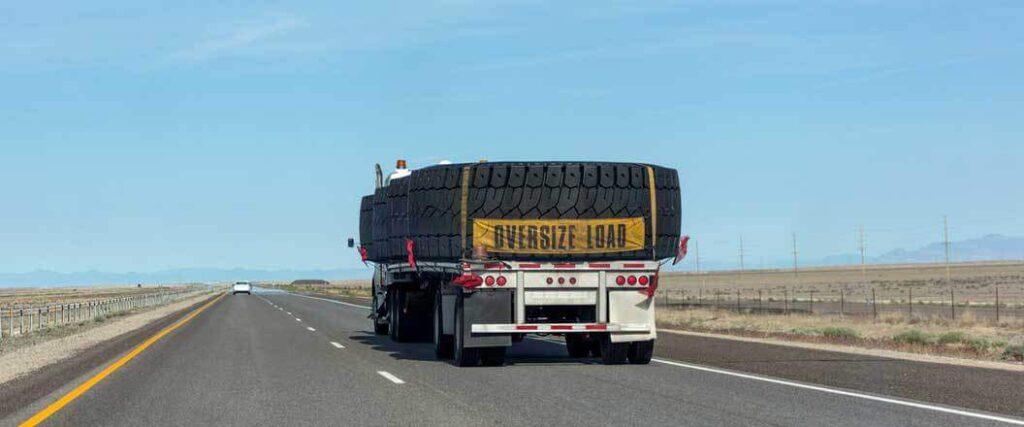
Heavy haul is just one of many terms used to describe freight that goes beyond conventional dimensions. Another term used interchangeably with heavy haul is “oversized” or “ oversized load.” Freight that falls into this category often has at least one of the following characteristics:
It’s important you know what the maximum dimensions for freight are. Therefore, if your freight exceeds the maximum width, height or weight, you’ll know that it will be considered heavy haul and may require a permit. We discuss these maximum dimensions and weights in the following section.
If it's a container you need to transport, look into our article on how to transport a shipping container.
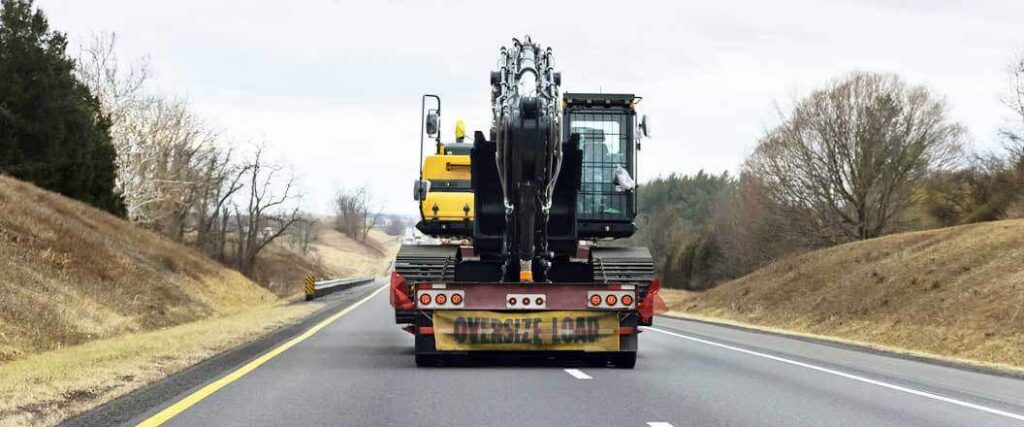
State regulations regarding the maximum dimensions and weight for freight shipments can vary, but most of them are roughly similar to one another. Below, we’ve included a table that takes into account the legal limits for the width and height of freight that states across the U.S. use.
| Width | Height |
| 8.5 Feet | 12 ½ to 14 ½ Feet |
Considering that most flatbed trailers are only 8.5 feet wide, all states in the U.S. use this as the maximum width that freight can be. However, height maximums are much more varied which will require you to research the height requirements of the state or states your shipment will travel through.
Freight weight maximums are harder to discern because they can vary based on a few factors. In the table below, we’ve included the maximum weight requirements necessary before a load can be considered heavy haul freight.
| Gross Vehicle Weight | 80,000 Pounds |
| Single Axle Weight | 20,000 Pounds |
| Tandem Axle Weight | 34,000 Pounds |
Provided by the Department of Transportation
If your freight exceeds these weights in any respect, it will be considered heavy haul or oversized. Maximum weights are set by DOT and states follow these requirements explicitly - in particular, the gross vehicle weight requirements. We’ll discuss heavy haul shipping regulations by state in detail below.
Moving loads of oversize and overweight freight will require you to obtain a state permit or even multiple state permits if your freight is traveling across multiple states.
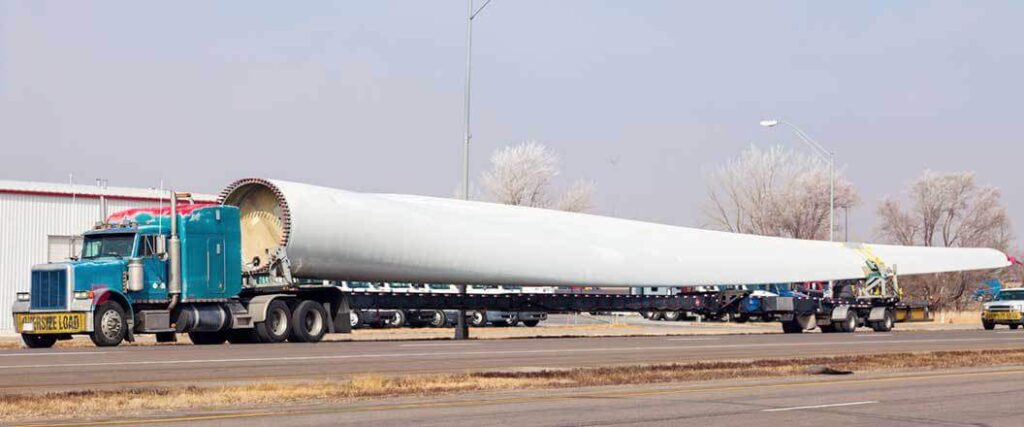
Once you’ve determined that the freight you plan on shipping is considered oversized or heavy haul, you’ll need to obtain and fill out a permit. Both the DOT of the state(s) your freight is traveling through and the hauling company moving the load will require a permit to move your freight to another destination.
What an oversized/heavy haul permit looks like, as well as what information you will need to include will vary from state to state. That said, you can expect to include the following:

Get your heavy cargo moving on schedule with all required permits! Get a personalized quote from our industry experts.
Applying for a permit will likely cost you a fee most commonly between $15 to $70, and in some cases, over $70. Some states also apply a separate processing fee of $15 as well. When shipping heavy haul freight, you have the option to obtain one of two types of heavy haul freight permits. These permits include the following:
As their names imply, a single trip permit will be good for only one trip and an annual permit will be good for a year. The cost of the permits varies by state, but you can count on the single-trip permit being much more expensive than the annual permit. Under the annual permit, you’ll only have to pay a fee per load.
Some trucking companies can obtain a heavy haul permit for you. However, the cost of the heavy haul permit will be factored into the total cost of your shipment.
When hauling farm equipment, you may be exempt from some permits. A heavy haul specialist would be better able determine permit needs in such cases.

There are numerous safety requirements that carriers must follow in order to move oversized loads successfully. As with permit information and maximum width, height and weight, regulations for safety equipment also vary based on state as well. Obtaining the equipment to follow these regulations costs trucking companies money.
These costs will also be reflected in the total cost of shipping your oversized freight, just as your permit fees will.
The first piece of safety equipment we’ll discuss are warning signs. States require that these signs or banners have either “WIDE LOAD” or “OVERSIZE LOAD” printed on them. Some of the benefits and drawbacks of using signs and banners include the following:
Your carrier will use either of these options based on their preferences.
Flags are another safety item that many states require semi-trucks and trailers hauling oversize freight to have. Safety flags must be easily noticeable by other drivers on the road and therefore must have the following characteristics:
States will either require carriers to attach flags to the load itself or to flag staffs. Flags need to be placed in the following orientations:
Carriers will keep the flags used for heavy haul shipping as clean as possible. This will ensure that the flags are easily noticeable by drivers on the road. For heavy haul freight that has an overhang that extends more than two or four feet, a flag must be attached to each corner of the freight. Shipments with less than two feet of overhang will only need to have a flag.
Finally, we’ll discuss how lights are used when shipping heavy haul freight and the regulations surrounding their use. Safety lights are used either during nighttime operations or when truckers are transporting heavy haul freight in low visibility.
Lights for heavy haul shipments should have the following characteristics:
Heavy haul loads must have lights placed in the same orientations that flags are. Some states will require semi-trucks to have an additional light on top of the cab. Rules for using lights on heavy haul freight that overhangs are usually the same for lights as it is for flags as well.
The exception is that lights will be used during nighttime travel and during poor visibility while flags are used for daytime use
If you're working on a renewable energy project, look into our article on wind turbine transport.
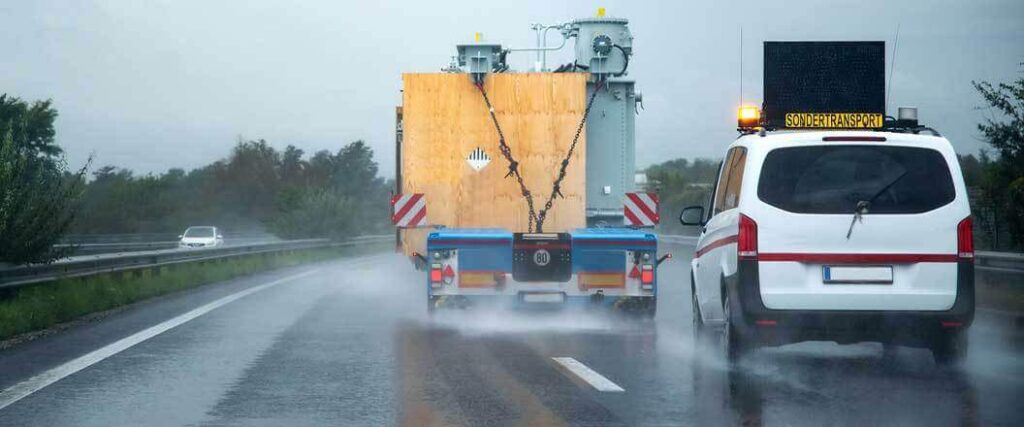
Escort vehicles (also known as pilot cars) are the vehicles that drive ahead and behind semi trucks hauling oversized freight. These vehicles are typically pickup trucks, cars or SUVs that have safety equipment of their own attached to them.
Some states will only require a pilot car to accompany heavy haul loads that are over 10 feet wide. In other states, escort vehicles may be required to accompany all oversized loads, regardless of their width. The number of pilot cars and where they should be in relation to the truck transporting the load can also vary by state.
When a semi that’s transporting heavy haul freight is traveling down a road or highway, you can find pilot cars in any of the following positions:
Heavy haul loads that are extremely wide may also need to be escorted by law enforcement vehicles to give drivers extra notice of the shipment.
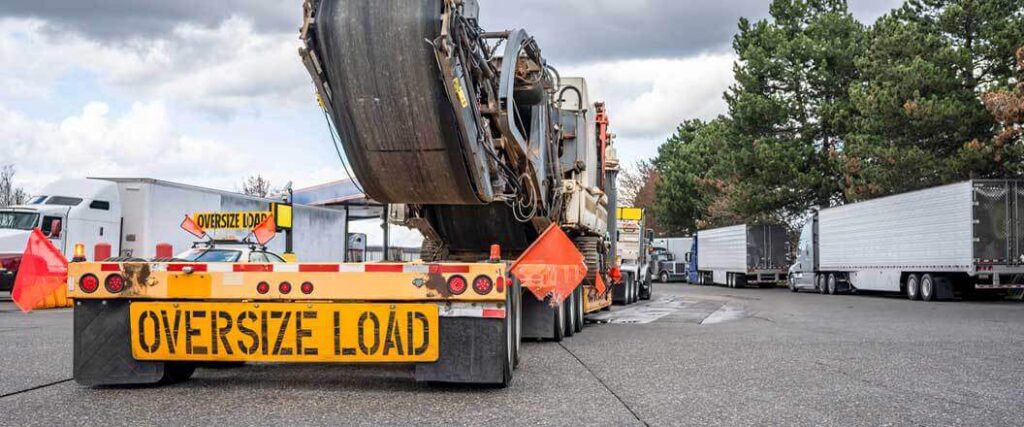
Running times are a term in the transportation industry that refers to the times that truck drivers are allowed to be out on the road. As with all of the other regulations regarding heavy haul that we’ve mentioned, running times for these shipments vary by state.
Running times can be affected by the following:

Reach out to us at (855) 490-2433 or fill out our quick form and a live agent will be in touch shortly.
You should never expect your heavy haul freight shipment to travel quickly or arrive early thanks to these running time factors. That means you’ll need to plan out your heavy haul shipments carefully. When doing so, be sure to provide a large enough window of time for your freight to arrive at the destination you want it shipped to.
Look into our article on holiday restrictions for oversize loads to understand how holiday runtimes differ in each state.
At Heavy Haul & Oversized, moving large pieces of freight is our specialty. We handle all of the logistical challenges that come with transporting heavy haul freight so our customers don’t have to. Once the logistics are handled, we contact one of the many carriers we conduct business with and have them transport the load.
Not one type of flatbed suits every kind of heavy haul freight which is why we offer heavy haul transportation using the following types of trailers:
We can also offer you consulting sessions if you need help planning and organizing your heavy haul or oversized shipment. Fill out your quote today or contact us at (855) 490-2433 to schedule your shipment or consulting session.
Heavy Haul and Oversized
315 NE 14th Street #4122
Ocala, FL 34470